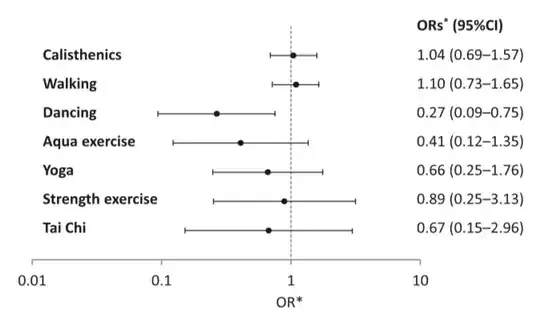I asked earlier what is the idea behind putting up Table 3.
I have a follow up question on how non-response bias identified can justify the different sizes of Confidence Interval(CI) in Figure 3. My reasoning is that assuming p-value are small for the exercises, this adds some systematic error into the formation of CI size, and accounts for the varying size of CI in the research(Figure 3)? Also, only remaining follow-up data is analysed as the sample size for each exercise, larger analysed samples would generally mean smaller random errors. The systematic and random errors will account for the differing sizes of CI for all exercises.
Here's an online copy of the research article.
